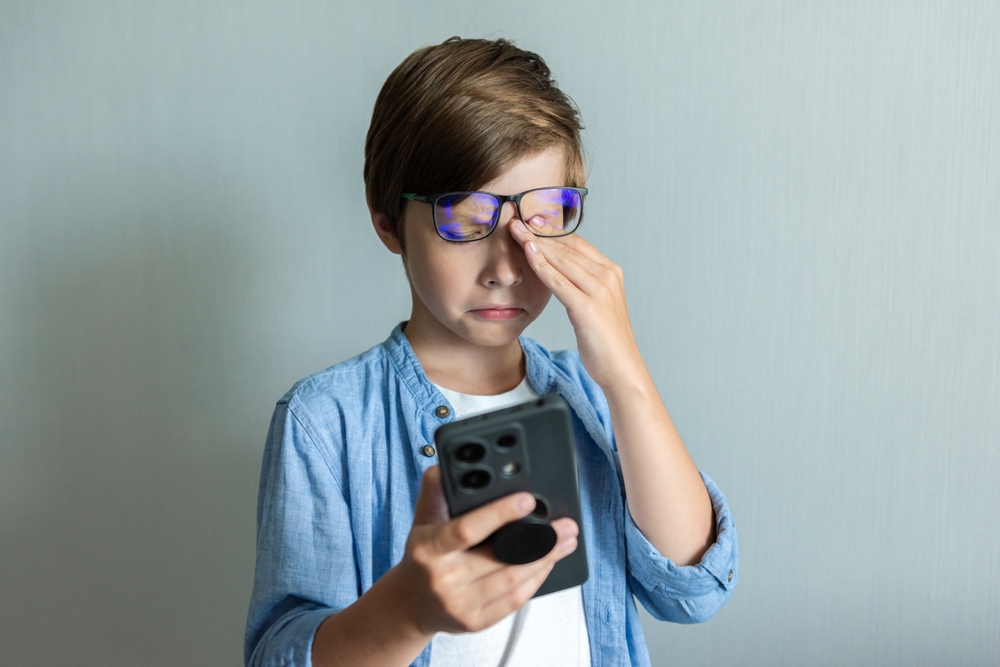
If your child struggles with reading, complains of frequent headaches, or has difficulty with depth perception, an underlying vision issue may be the cause. Binocular Vision Dysfunction (BVD) is a condition that affects how the eyes work together as a team, leading to a range of symptoms that can interfere with a child’s development and performance. Understanding the causes, signs, and treatment options for BVD can help parents seek the right care for their child.
What Causes Binocular Vision Dysfunction in Children?
Binocular Vision Dysfunction occurs when the eyes have trouble aligning and coordinating properly, causing visual strain and discomfort. This can result from:
• Muscle Imbalances: Weak or misaligned eye muscles can prevent the eyes from working together efficiently.
• Developmental Delays: Some children experience delays in visual development, impacting their ability to focus and track objects.
• Concussions or Head Trauma: Injuries affecting the brain can disrupt communication between the eyes, leading to BVD.
• Genetics: Some children inherit tendencies toward eye misalignment or focusing difficulties.
Without proper diagnosis and treatment, BVD can lead to ongoing struggles in academics, sports, and daily life.
Recognizing the Symptoms of BVD
Because children may not realize their vision is different from others, they might not express their discomfort clearly. Parents should watch for signs such as:
• Frequent headaches or eye strain
• Skipping words or losing place while reading
• Difficulty with reading comprehension
• Double vision or blurred vision
• Squinting, tilting the head, or covering one eye
• Dizziness or nausea, especially when moving
• Poor coordination and balance
• Light sensitivity or difficulty focusing in bright environments
The Importance of a Functional Vision Exam
A routine vision screening or a basic eye exam may not detect BVD. A functional vision exam with a developmental optometrist is crucial. This in-depth assessment evaluates how well a child’s eyes work together, including tracking, focusing, depth perception, and eye alignment. Identifying BVD early allows for targeted interventions that can improve a child’s comfort and performance in school and daily activities.
Treatment Options for Binocular Vision Dysfunction
The good news is that BVD is treatable, and children can experience significant improvement with the right approach. The most effective treatment options include:
• Vision Therapy: A structured program of eye exercises designed to retrain the brain and eyes to work together more effectively. Vision therapy helps strengthen eye coordination, tracking, and focusing abilities, reducing symptoms over time.
• Specialized Prism Lenses: Prism lenses alter the way light enters the eyes, helping to realign vision and reduce strain. These lenses can provide immediate relief from symptoms like double vision and dizziness.
Treatment is personalized based on the severity of the condition and the child’s specific needs. With the right care, children can overcome BVD and improve their visual skills for better academic and everyday success.
Take the First Step Toward Clearer Vision for Your Child
Binocular Vision Dysfunction is a hidden but impactful condition that can affect a child’s learning, coordination, and quality of life. Recognizing the symptoms and seeking a functional vision exam are critical steps in getting the right diagnosis. With personalized treatment through vision therapy and specialized lenses, children can experience significant improvements in their vision and overall well-being.
If your child is struggling with reading, headaches, or coordination, schedule a functional vision exam with New Horizons Vision Therapy Center and help your child reach their full potential. Contact either our Waunakee or Waukesha, Wisconsin locations, by calling (608) 849-4040 to book an appointment today.





